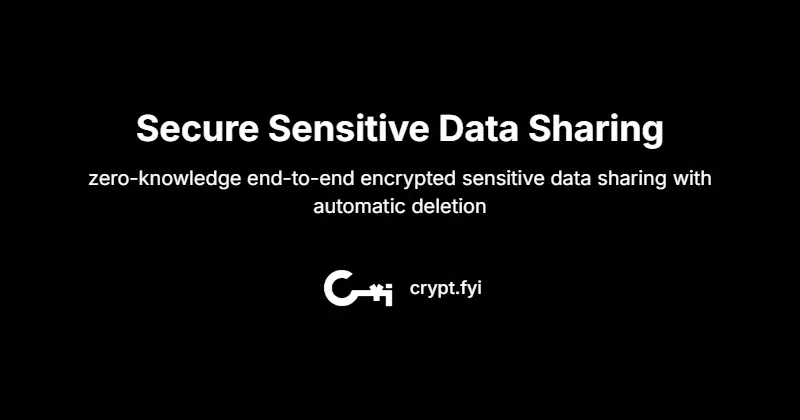From an author:
I wanted to share crypt.fyi - a free, open-source tool I built for securely sharing sensitive data/files. It uses client-side encryption and zero-knowledge architecture.
Key features:
- Zero-knowledge architecture
- End-to-end encryption using AES-256-GCM (actively investigating post-quantum encryption options)
- Self-hostable
- Suite of configurations (password, burn after read, max read count, ip/cidr-allow list, webhooks)
- Strict rate-limiting
- Strict CSP to mitigate supply chain attacks
- Web, cli, and chrome-extension clients
- Fully open source (Github)
The problems I aimed to solve: Many people share sensitive info (passwords, keys, etc.) through email, Slack, or SMS - which often leaves plaintext copies in multiple places. Existing solutions either require accounts, aren’t open source, or have security/privacy/ui/ux/feature/config gaps/limitations.
crypt.fyi is built with privacy-first principles:
- No logging of sensitive data
- No analytics or tracking
- Separation of web and api servers
- All encryption/decryption happens client-side using shared cross-platform cryptography primitives from noble cryptography
- TLS encryption for all traffic
- Encrypted data is automatically destroyed after being read with strong guarantees around once-only reads
The entire codebase is open source and available for review. I’d love to get feedback from the privacy community on how to make it even better!



The key is transmitted in a URL query parameter. I’m planning to optionally have it transmitted separately from the URL but ultimately, the decryption key would be transmitted via otherwise insecure / normal means. This is where the understandable and healthy critique around the security/privacy of the tool stems. I shared with another user that this tool is an incremental step in the direction of more secure and ephemeral transmission of data with convenience and accessibility as a core tenant of the tools existence. Yup it is AES 256 and I believe NIST has finalized post-quantum recommendations. I’ll likely be using ML-KEM which increases the resulting data size considerably but is also considerably faster.
Thanks for the explanation!
Yeah, you could let the user encrypt the sensitive data with “your” public key for example (or use ssh I guess). For sharing keys, that’s more complicated of course, especially if the person that is going to get the key doesn’t know it will get the key beforehand (or the key can be encrypted with their shared public key).